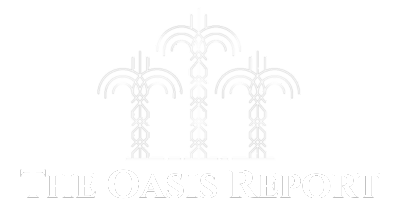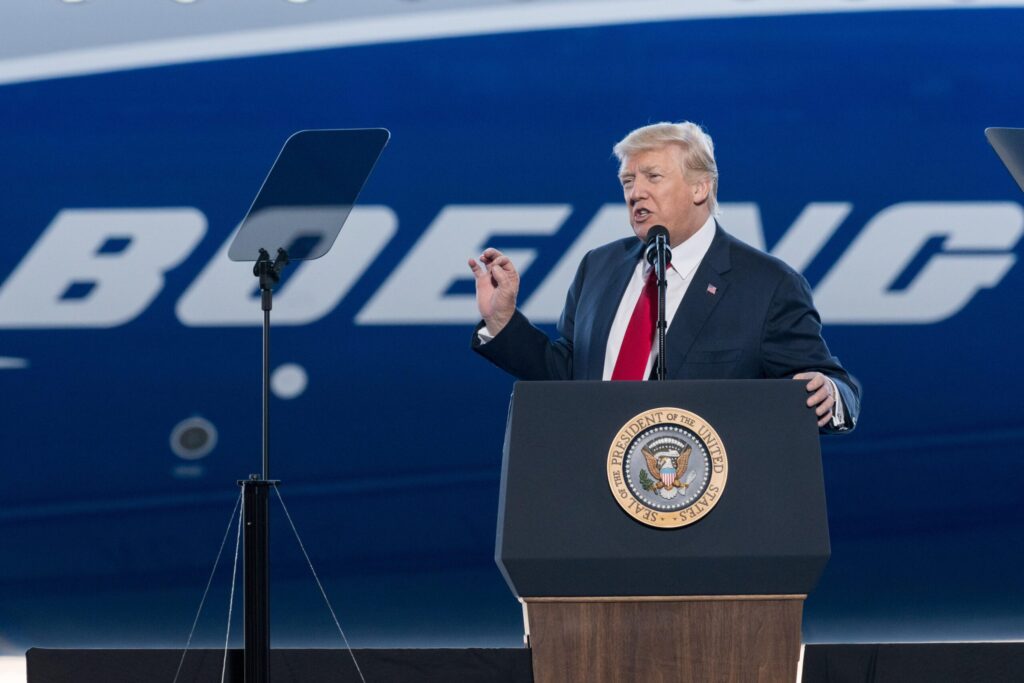Parts needed for F-15EX fighter jet
Boeing considers Saudi Arabia
Economic benefits and challenges
Boeing’s announcement that it may manufacture parts of one of its fighter jets in Saudi Arabia highlights deepening commitments between the kingdom and the US, as well as the challenges of turning them into reality.
During President Donald Trump’s trip to the Gulf earlier this month, hundreds of billions of dollars worth of deals were signed in sensitive sectors like technology, aviation, energy and defence.
They spanned pledges by Saudi Arabia, the UAE and Qatar to invest heavily in the US, and touched on American companies’ growing involvement in helping GCC states localise production of everything from data centres to military equipment.
In a sign of possible things to come, a Boeing official told Saudi state TV the aircraft manufacturer was considering including Saudi Arabia in the “global supply chain” of its F-15EX fighter jet, Reuters reported on May 13.
For Saudi leaders, this may be music to their ears and in line with the Vision 2030 strategy to target 50 percent of military spending domestically by 2030, says Dana Stroul, a former US deputy assistant secretary of defence for the Middle East.
“For the Trump administration, this is seeing Saudi Arabia as a strategic partner. We’re committed to it and we want to be the partner of choice across both defence and military sectors and the civilian side,” Stroul, who is now director of research at The Washington Institute for Near East Policy, says.
Yet meeting Saudi, and neighbouring UAE, demands for more co-production of military hardware is a “huge challenge” for the American defence industry and US government regulatory authorities, both in terms of the bottom line and of ensuring compliance with security protocols, Stroul says.
“There hasn’t been the kind of coherent policy review to answer these questions that there should be,” Stroul says.
Details about what Boeing’s possible move on the F-15EX might look like in practice were not available at the time of writing. The company did not immediately respond to a request for comment.
If it progresses, the arrangement is likely to be designed on an ad hoc basis, Stroul says. It might echo co-production agreements between the US and Israel over the latter’s Iron Dome missile defence system, though the two are not perfect parallels.
It may also come into conflict with campaign promises made by Trump to bring back to the US as much manufacturing as possible.
“The Trump administration is going to have to think about how much reshoring for our industry makes both economic sense and where the pain point is with our partners and allies,” Stroul says.
“It’s possible that there is tension at some point, but because there isn’t a consensus on what the percentage of production and indigenisation will be for any one of these contracts with Saudi Arabia, it’s hard to know.”
Saudi Arabia has long been among the top buyers of US weapons, and, during the recent presidential visit, agreed to additional purchases worth $142 billion.
But the kingdom and wider GCC’s insistence on ensuring that bilateral trade and investment deals contribute to boosting the domestic skills base increasingly extends beyond the military domain.
It is now a hallmark of how the region operates, especially when it comes to artificial intelligence and advanced technology, says Dania Thafer, executive director of Gulf International Forum in Washington.
“This is a new era in terms of how the Gulf states are looking at their economic transactions,” she says.
According to Thafer, the issue of just how much F15-EX manufacturing might eventually take place in Saudi Arabia is one to watch, but the fact remains that the partnerships clinched during Trump’s trip to the Gulf still benefit the US economy “tremendously”.



